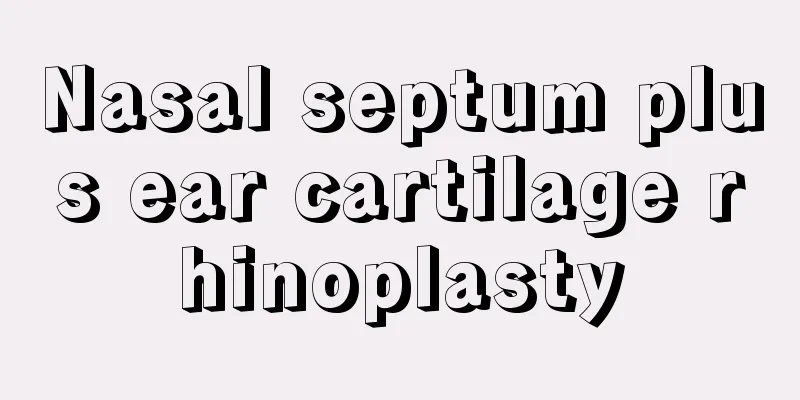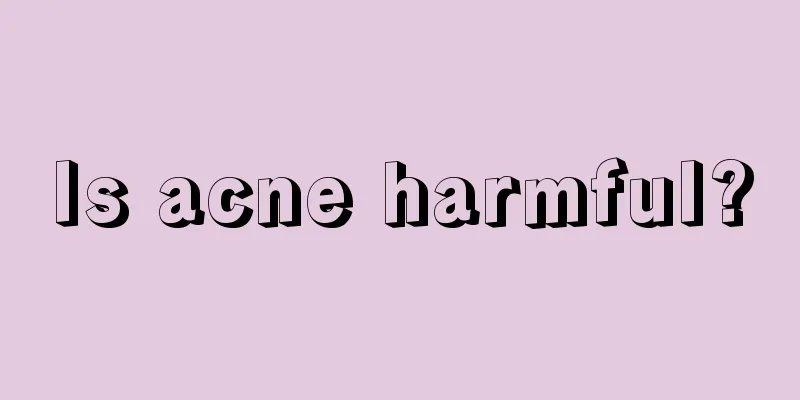Nasal septum plus ear cartilage rhinoplasty

|
Most people will choose the method of prosthesis implantation when doing rhinoplasty, because the effect of this kind of rhinoplasty is more obvious. Some people will choose the method of self-fat rhinoplasty. In fact, adding a piece of cartilage to our nose has a better effect. It also has a certain shelf life. Especially after the operation, it is necessary to prevent inflammation. So, is rhinoplasty with nasal septum and ear cartilage useful? Septum Rhinoplasty Looking at the development of rhinoplasty materials, the most ideal and safest rhinoplasty material at present is the cartilage from one's own body, that is, autologous cartilage. Ear cartilage and nasal septum can only be used for nose tip plastic surgery due to limited bone resources. Ear cartilage can be used to lift the nose tip and increase the curvature of the nose tip; nasal septum cartilage is used to lift and lengthen the nose tip and columella; costal cartilage can be used to improve both the nose bridge and the nose tip due to limited bone resources. Septal cartilage rhinoplasty refers to a cosmetic surgery that uses autologous septal cartilage transplantation as rhinoplasty material. In traditional nasal cosmetic surgery, the choice of nasal tip support materials has always been a difficult problem to solve. The use of foreign body support creates a very difficult to resolve contradiction in terms of tension and appearance. Silicone and other prostheses are not suitable for everyone, especially those who are prone to allergies, so they should be more cautious. The use of autologous nasal septum cartilage transplantation can solve the problem of human immune response. Surgical Procedure Septal cartilage harvesting 1% dicaine plus a small amount of 0.1% epinephrine cotton pads were used for surface anesthesia of the nasal mucosa, and 200 mg of 2% lidocaine plus 5 drops of 0.1% epinephrine were used for infiltration anesthesia of the bilateral infraorbital foramina, subcutaneous tissue at the base of the nose and the edge of the piriform foramen. An inverted V-shaped incision is made, with the tip of the V 0.5 to 0.6 cm above the upper lip, involving part of the lip muscle, and the two arms extending upward to form an incision inside the edge of the nostril to the dome of the nose. From bottom to top, the columella is peeled off close to the front end of the septal cartilage to the nose tip and the upper inner part of the nose wing, and then lifted up to form the upper lip-columella-nose tip skin flap, so that the nasal cartilage structure can be directly observed. The nose is peeled upwards close to the surface of the lateral nasal cartilage to the junction of the cartilage and nasal bone, the nasal periosteum is incised, and the nasal bone is separated close to the nasal bone to prepare a deep, non-biased, and appropriately sized nasal dorsum tunnel. Depending on the situation, the perichondrium and periosteum on both sides of the septum are peeled off to form a lateral tunnel. Keep 1.5CM of nasal septum cartilage at the nasal dorsum and columella (to avoid collapsed nose deformity) and cut the middle and posterior septum cartilage. Use of nasal septum cartilage The nasal septum cartilage is a plate-like cartilage that divides the two nasal passages. By retaining a portion in the front and top and removing the entire portion at the back and bottom, the integrity of the nose shape can be maintained while obtaining the required material. Moreover, the material collection site is in the same surgical field as the rhinoplasty, so no separate operation is required. The removed transparent cartilage of the nasal septum can become a "part" to change the shape of the nose tip after a little processing in the hands of an experienced doctor. For example: the support rod graft, after being fixed in the columella, constitutes the "top beam" of the entire nasal cone, providing a force point when the entire nose tip is tilted; the nasal septum extension graft, after being fixed in front of the nasal septum, allows the nose tip to move forward and downward, solving the problems of "upturned nose" and "exposed nostrils"; the shield graft, fixed between the highest point of the nose tip and the upper end of the columella, allows the nose to have an "upturned nose tip" when viewed from the side, and a "pointed nose tip" when viewed from the front. There are dozens of similar graft "parts" that can be made from the nasal septum cartilage, which basically cover all the ugly nose tip shape adjustments. |
<<: Is autologous fat rhinoplasty permanent?
>>: How long does it take to get a hyaluronic acid rhinoplasty?
Recommend
Specific medicine for curing gallbladder cancer
Among the malignant tumors of the gallbladder, ga...
What to do if the mouth becomes crooked after treatment of nasopharyngeal cancer
If you have nasopharyngeal cancer, you will have ...
How to deal with burns? Burns can be divided into three degrees according to the severity of the disease
We may encounter some accidents in life, such as ...
What's going on with nasopharyngeal lymphoid tissue hyperplasia
Lymphatic tissue is an important organ in the hum...
What causes pain in feet and calves
Foot and calf pain is a common phenomenon. There ...
Early symptoms of tongue cancer in women
The early symptoms of tongue cancer in women are ...
What are the vegetables that can detoxify?
Recently, many people do not pay attention to bod...
Benefits of drinking ginger and jujube tea during the dog days
As we all know, treating winter diseases in summe...
What to do if the knee ligament is strained? The treatment method is like this
Knee ligament sprain is a common sports injury th...
Indications for common bile duct exploration
The gallbladder secretes bile to aid digestion. I...
Watermelon Anthracnose
Isn’t it refreshing to eat a bite of watermelon o...
Will nasopharyngeal cancer cause headaches? What are the early symptoms?
In life, many people with nasopharyngeal cancer w...
Brief analysis of the late symptoms of esophageal cancer
Many people may know about esophageal cancer, but...
Recurrence rate after bone cancer amputation
Although our current medical technology has made ...
Does honey brown hair make your skin look whiter?
Many people choose to dye their hair in order to ...









